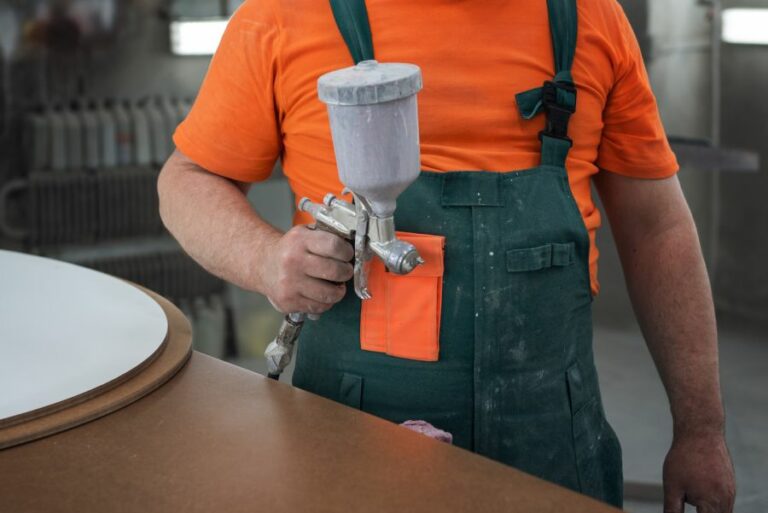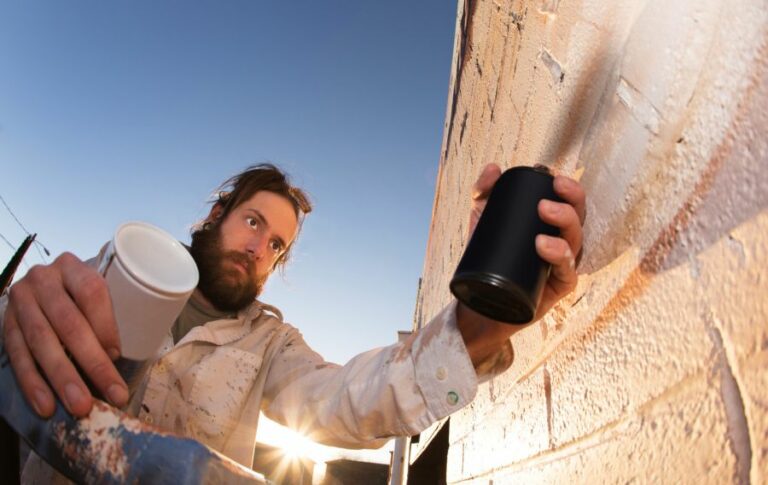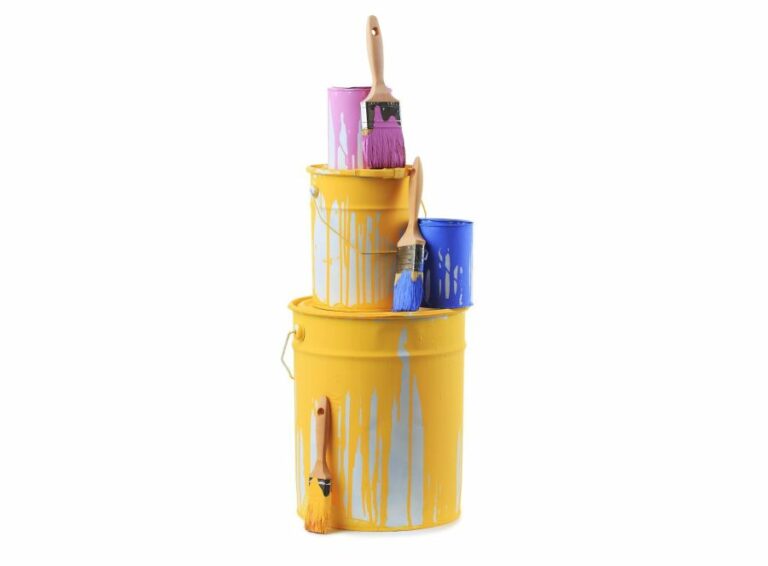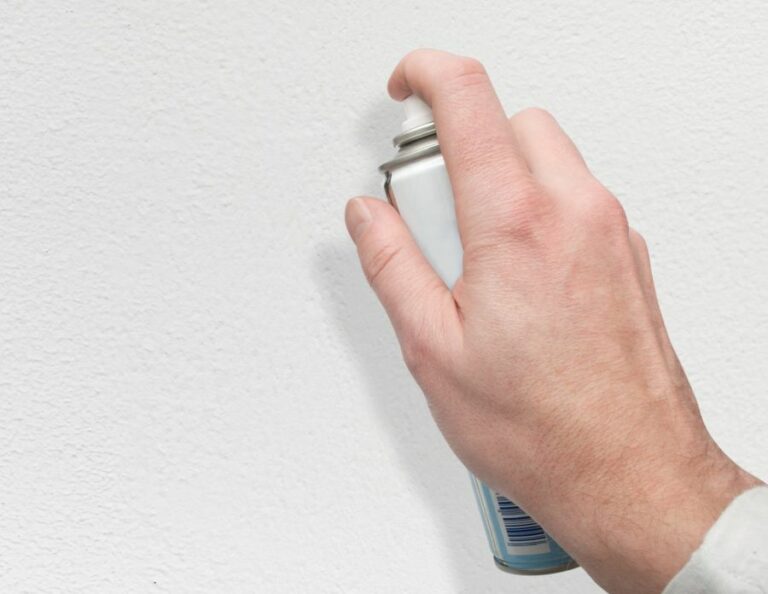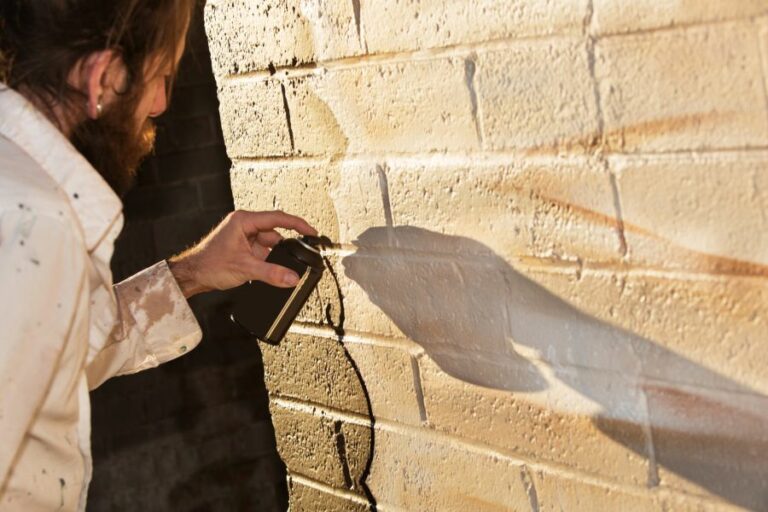Types Of UV-Reactive Spray Paints Explained
If you’ve been pondering the world of UV-reactive spray paints and looking for a comprehensive guide to understanding the different types available, you’re in the right place. As experts in this illuminating field, we are confident in helping you decipher the key differences between various UV-reactive spray paints on the market.
Types of UV-reactive spray paints explained:
UV-reactive spray paints, including fluorescent, phosphorescent, and UV-reactive clear coats, are popular for their glow-in-the-dark properties. Fluorescent sprays absorb UV light and emit visible colors, while phosphorescent ones store light energy and release it over time. UV-reactive clear coats add UV reactivity without altering the appearance. Commonly used in art, design, and industries requiring visibility, these paints provide aesthetic and functional value.

Curious about UV-reactive spray paints and their wide range of applications? Read on to discover the various types of these vibrant, glowing paints and explore their countless creative possibilities!
Contents
- 1 Exploring Various UV Sensitive Spray Paints
- 2 Diverse Glow Paint Categories Uncovered
- 3 Defining UV Responsive Paint Significance
- 4 Identifying Blacklight-Activated Paint Varieties
- 5 Discovering UV Responsive Color Spectrum
Exploring Various UV Sensitive Spray Paints
Ultraviolet (UV) reactive or “glow in the dark” spray paints have gained popularity in recent years due to their unique ability to absorb ambient light and emit a distinct glow when exposed to UV light.
These paints are commonly used in art, design, and various industries requiring specific visibility, such as safety markers or entertainment props.
• Fluorescent Spray Paints
Fluorescent spray paints are the most common type of UV-reactive paint that most people are familiar with. They are characterized by their bright, vibrant colors that appear to “glow” when exposed to UV or black light.
These paints work by absorbing the invisible UV light and re-emitting it as visible light in a specific color.
– Applications and Recommendations
Fluorescent spray paints are commonly used in projects requiring high visibility, such as safety signs, building markings, and artwork. They are also popular in the entertainment industry for stage props, costumes, and your popular blacklight party decorations.
I recommend using Krylon Fluorescent spray paint for a reliable and quality finish. Remember to apply multiple light layers of paint to achieve even coverage and allow for proper drying time between layers.
• Phosphorescent Spray Paints
Phosphorescent spray paints, also known as “glow-in-the-dark” paints, contain luminescent elements that can store light energy and re-emit it over time. Unlike fluorescent paint, phosphorescent paint relies on the absorption of ambient light rather than UV light to produce a visible glow.
– Applications and Recommendations
Phosphorescent spray paints are perfect for projects requiring illumination in low-light or dark environments. Common applications include safety markings, glow-in-the-dark star stickers for ceilings, and outdoor decorations.
Personally, I recommend using Rust-Oleum Glow in the Dark spray paint for both indoor and outdoor projects. This paint has excellent durability and long-lasting glow properties.
Like with fluorescent paints, apply multiple light layers, and remember to charge the phosphorescent paint under a bright light to achieve the best glowing effect.
• UV-Reactive Clear Coats
UV-reactive clear coats are a specialized type of spray paint that offers the ability to add UV reactivity without altering the visual appearance of an object. These clear coats contain a UV-reactive material that provides a transparent layer of protection and UV-reactivity over the object’s original surface.
– Applications and Recommendations
UV-reactive clear coats are perfect for preserving artwork or protecting surfaces without altering their appearance. They are commonly used in the custom automotive industry, where they provide a unique glow effect to car paint under UV lighting.
For a high-quality UV-reactive clear coat, I recommend using Montana Cans UV Transparent, which provides excellent UV reactivity and surface protection.
• Safety Tips for Using UV-Reactive Spray Paints
Working with UV-reactive spray paints can be safe if proper precautions are taken. Below are some general safety tips to follow while working with spray paints:
- Always work in a well-ventilated area to avoid inhaling paint fumes.
- Use proper personal protective equipment, such as gloves and a face mask, to avoid skin or eye irritation.
- Follow the manufacturer’s instructions for the specific type of paint you’re using for optimal results.
- Properly dispose of used paint cans according to local regulations.
For more detailed information about spray paint hazards and safety guidelines, visit U.S. Environmental Protection Agency‘s document on aerosol paint management.
In conclusion, understanding the different types of UV-reactive spray paints and their specific applications can help you choose the right product for your project.
Whether you are working on a small personal project or a large industrial application, UV-reactive spray paints offer unique and high-visibility finishes that provide significant aesthetic and functional value.
Now that you’re equipped with this knowledge, go explore the creative possibilities of these fascinating paints!
Type | Description |
|---|---|
Invisible UV Spray Paint | This type of spray paint appears clear or white in normal light but glows under UV light. It is often used for hidden messages or decorations, security markings, and other applications where the paint needs to be concealed in regular lighting conditions. |
Fluorescent UV Spray Paint | Fluorescent spray paints are brightly colored under normal light and become even more vibrant when exposed to UV light. They are often used for high-visibility applications, such as safety markings or attention-grabbing artwork. |
Phosphorescent (Glow-in-the-Dark) UV Spray Paint | Phosphorescent spray paints absorb light and then release it slowly in the form of a glowing effect when in total darkness. While not as bright and vivid as fluorescent paints under UV light, they are visible in low-light conditions and do not require constant exposure to a UV light source. |
Chameleon UV Spray Paint | Chameleon spray paints change color depending on the angle at which they are viewed or the lighting conditions. When exposed to UV light, the color shift becomes more pronounced, resulting in a unique and eye-catching effect. |
Blacklight Top Coat Spray Paint | This type of spray paint is designed to be applied over another color or surface to make it UV-reactive. The top coat itself may be clear or have a slight tint but will cause the underlying surface to glow or stand out under UV light. |
Diverse Glow Paint Categories Uncovered
Glow paint, also known as luminescent or phosphorescent paint, has gained popularity due to its unique ability to emit visible light after being exposed to a light source.
This fascinating attribute has made it a favorite choice for various applications, from creative art projects and home and party decorations to safety and emergency use.
• Types of Glow Paints
– Water-Based Glow Paint
Water-based glow paint is considered one of the most versatile and environmentally friendly options. This type of paint is made of pigments that are suspended in a water-soluble base. When applied to surfaces, it dries quickly and can easily be cleaned up with water.
Water-based glow paint is safe to use, non-toxic, and has low levels of odor or volatile organic compounds (VOCs) released during the drying process.
Water-based glow paint works well on various surfaces, such as wood, paper, fabric, and plastic, making it a popular choice for both indoor and outdoor applications. It can be applied using brushes, rollers, sponges, or spray guns, depending on the desired effect.
– Acrylic-Based Glow Paint
Acrylic-based glow paint is another popular option, particularly among artists and DIY enthusiasts. This type of paint is made by combining pigments with an acrylic polymer, resulting in a durable, flexible, and water-resistant finish when dry.
=Acrylic-based glow paint tends to be more opaque and, in general, offers a higher level of glow intensity and longevity compared to water-based glow paint.
It has excellent adherence to multiple surfaces, including wood, metal, fabric, and plastic. However, it may require a primer, particularly on porous surfaces or when using it on surfaces that are subjected to extreme temperatures or weather conditions.
– Oil-Based Glow Paint
Oil-based glow paint consists of pigments dispersed in linseed, soybean, or synthetic oil. This type of paint is known for its outstanding durability and smear resistance, making it perfect for high-traffic or heavily used areas.
However, it has a longer drying time compared to water-based and acrylic-based glow paints.
Oil-based glow paint can adhere to a variety of surfaces, including wood, metal, and concrete. Since it is solvent-based, it can emit strong odors and high levels of VOCs as it dries, which makes it essential to use in well-ventilated areas only.
Moreover, you’ll need to clean up with a compatible solvent like mineral spirits or paint thinner.
– Epoxy Glow Paint
Epoxy glow paint consists of a two-component system, a resin, and a hardener that, when mixed, provides a highly durable and chemical-resistant coating. This type of glow paint is best known for luminous rocks and other outdoor applications.
Epoxy glow paint exhibits excellent adhesion to most surfaces, including wood, metal, concrete, and fiberglass, and creates a thick, waterproof, and non-yellowing finish.
However, epoxy glow paint has a relatively shorter working time than other glow paint types, so it may require careful planning and faster application to ensure proper curing and avoid potential wastage.
• Factors to Consider When Choosing a Glow Paint
– Glow Intensity and Duration
Different glow paints exhibit varying levels of brightness and duration. While most high-quality glow paints can emit light for 8 to 12 hours, some premium varieties can last up to 24 hours or more.
Manufacturers often provide technical details, including the specific glow intensity and duration you can expect from their products.
– Color Options
Glow paints are available in various colors, ranging from the common green, blue, and yellow to the rarer purple, orange, and red. It is essential to know that the glow’s actual appearance is often different from the paint’s color when it’s not exposed to a light source.
– Transparent or Opaque
Depending on the intended application and desired effect, certain glow paints can be transparent or opaque. Transparent glow paints tend to be more suitable for use on lighter surfaces, as the glow may appear dull or less vibrant on darker surfaces.
On the other hand, opaque glow paints have better color visibility on darker surfaces but can be less vibrant when they emit light.
– Environment and Safety
If you are looking for an eco-friendly option or working in a poorly ventilated area, water-based glow paint is the ideal choice.
However, if you require something more durable and resistant to extreme conditions, you may opt for acrylic-based or epoxy glow paint, keeping in mind the need for proper ventilation during application.
In conclusion, understanding the different types of glow paints and their distinct characteristics is essential in making the right choice for your specific application.
Consider factors such as the type of surface you will be working on, glow intensity, color options, transparency, and environmental safety when making your selection. With the right glow paint, you can create stunning visual effects, improve safety, or add an exciting element to any project.
Type | Description |
|---|---|
Invisible Glow Paint | This type of paint is nearly invisible in normal light but glows brightly in the dark under UV or black light. |
Acrylic Glow Paint | Acrylic glow paint is water-based and can be applied to various surfaces such as wood, metal, and plastic. It glows in the dark and under UV light. |
Glow Spray Paint | This paint comes in an aerosol can and can be sprayed onto surfaces for a glowing effect. It is suitable for both indoor and outdoor use. |
Glow Fabric Paint | Designed specifically for use on textiles, glow fabric paint can be applied to clothing, bags, and shoes for a glowing effect. |
Outdoor Glow Paint | Outdoor glow paint is designed to withstand harsh weather conditions and is suitable for use on surfaces such as concrete, metal, and wood. |
Defining UV Responsive Paint Significance
• Introduction to UV-Reactive Paint
UV-reactive paint, also known as fluorescent or glow-in-the-dark paint, is a type of paint that responds to ultraviolet (UV) light. It contains special pigments that absorb UV light and then re-emit it as visible light, giving the painted surface a glowing appearance.
UV-reactive paint is widely used for various purposes, from creating attention-grabbing artworks to providing safety markings in low-light situations.
• Understanding UV Light
To better grasp how UV-reactive paint works, it’s important to have a basic understanding of UV light. UV light is a form of electromagnetic radiation that has shorter wavelengths than visible light. It is divided into three categories: UVA, UVB, and UVC.
UV-reactive paint primarily responds to UVA light, which has wavelengths between 320 and 400 nanometers. UVA light is present in sunlight and can also be produced artificially using UV lamps or black lights. When UV-reactive paint is exposed to UVA light, its fluorescent pigments absorb the energy and then emit it as visible light, creating the characteristic glow.
• Types of UV-Reactive Paint
There are several types of UV-reactive paint available on the market, each with its unique characteristics and applications.
– Water-Based Fluorescent Paint
Water-based fluorescent paint is a popular choice due to its non-toxic properties and ease of use. It dries quickly and can be applied to a wide range of surfaces, including canvas, paper, wood, and fabric. This type of paint is ideal for creating temporary designs as it can be removed with water.
– Acrylic Fluorescent Paint
Acrylic fluorescent paint is a durable and versatile option. It can adhere to a variety of surfaces, such as wood, metal, glass, and plastic, and is typically more resistant to wear and water exposure than water-based paint. This makes it suitable for both indoor and outdoor applications.
– Powdered Pigments
Fluorescent powder pigments are a flexible and cost-effective alternative to pre-mixed paints. These pigments can be mixed into a wide range of mediums, such as acrylic, oil, or aqueous binder, to create a custom UV-reactive paint.
It allows artists to adjust the paint’s properties, such as drying time, transparency, and viscosity. Furthermore, it enables access to a greater variety of fluorescent colors.
• Applications of UV-Reactive Paint
UV-reactive paint has a wide range of applications, both practical and artistic. Here are some common uses:
– Art and Design
UV-reactive paint is often utilized by artists for creating striking visual effects, as the fluorescent colors stand out under black light. It can be used for creating eye-catching murals, installations, and live performances.
– Safety Markings and Signage
Since UV-reactive paint glows in low-light conditions, it is an effective solution for providing safety markings in dark or dimly lit areas. Common applications include staircases, emergency exits, and hazardous areas in commercial and industrial settings.
It is also used to create visible markings for nighttime events, such as glow-in-the-dark fun runs.
– Security and Anti-Counterfeiting Measures
UV-reactive paint can be used as a security measure to identify authentic products and deter counterfeiting. By applying a UV-reactive marking to an item, it can be verified as genuine when exposed to a UV light source.
– Specialty Decorations and Crafts
The glow-in-the-dark effect of UV-reactive paint is a popular choice for creating themed decorations for occasions such as Halloween, parties, and other special events. It can also be used for DIY projects and crafts, such as personalized clothing and accessories.
• Tips and Recommendations for Working with UV-Reactive Paint
- Surface Preparation: To ensure proper adhesion and a smooth finish, clean and prime the surface before applying the paint. An even white base coat will enhance the fluorescent effect.
- Paint Application: Fluorescent paint may have lower opacity than regular paint, so multiple layers may be necessary to achieve the desired intensity. Allow the paint to dry fully between layers for best results.
- UV Light Source: The brightness of the glow depends on the strength of the UV light source. For best results, use a high-intensity black light, such as a mercury-vapor lamp.
- Protective Sealant: To preserve the longevity of your UV-reactive paint application, apply a clear protective sealant or varnish, especially for outdoor and high-wear projects.
- Safety Precautions: Always follow the manufacturer’s instructions when working with UV-reactive paint, and use appropriate personal protective equipment, such as gloves and goggles.
• Conclusion
UV-reactive paint is an innovative and versatile medium that offers a range of practical and creative possibilities. Understanding its properties and how it reacts under UV light is essential for achieving the desired results.
By following the tips and recommendations outlined in this article, you can successfully harness the potential of this unique paint, whether for artistic expression, safety applications, or fun, eye-catching decorations.
Identifying Blacklight-Activated Paint Varieties
Creating mesmerizing glowing effects under a blacklight is an attractive technique for many artists, decorators, and party planners. To achieve these effects, it is crucial to select the right type of paint.
• The Role of Fluorescent Paints in Blacklight Effects
Fluorescent paints play a significant role in creating glowing effects under blacklight. These paints “absorb” the blacklight’s ultraviolet (UV) radiation and subsequently emit visible light, which appears as a bright and vivid glow.
Fluorescent paints come in various colors, and they are commonly used for artwork, clothing, posters, decor, and more.
– Fluorescent Acrylic Paints
Fluorescent acrylic paints are a popular choice for many creators seeking blacklight reactive paint. These water-based paints are versatile, easy to apply, and have a quick drying time. They can be used on multiple surfaces, including canvas, wood, fabric, paper, and more.
A remarkable characteristic of acrylic fluorescent paints is their ability to glow when dry, making them an excellent option for those looking for a finish that remains reactive under blacklight.
I recommend using Golden Artist Colors Fluorescent Acrylics as they offer a variety of vibrant colors and are known for their high quality.
– Watercolors and Gouache Fluorescent Paints
Watercolor and gouache fluorescent paints provide a glowing effect under blacklight and are an excellent choice for artists and decorators looking for a more fluid, transparent, or matte finish. These paints can be used on multiple surfaces, including paper, canvas, and watercolor boards.
I recommend using M. Graham & Co. Artists’ Gouache Fluorescent Colors for their exceptional pigmentation and consistency.
• The Importance of Phosphorescent Paints in Blacklight Effects
Phosphorescent paints, also known as glow-in-the-dark paints, absorb light and emit a glowing effect when placed in the dark. While these paints are not directly reactive to blacklight, they can be “charged” by the blacklight’s UV radiation, which causes them to glow for an extended period.
This unique characteristic makes phosphorescent paints an intriguing choice for those seeking continuous glowing effects under blacklight.
– Phosphorescent Acrylic Paints
Phosphorescent acrylic paints are a popular option for those looking for a durable and long-lasting glow-in-the-dark effect. These paints can be used on various surfaces, including canvas, wood, paper, and fabric.
Since phosphorescent paints need exposure to light for “charging,” it is crucial to use them with a clear coat, as this ensures optimal light absorption.
I recommend using Golden Artist Colors Phosphorescent Acrylics for their superior quality and extended glowing duration when charged under blacklight.
– Spray Phosphorescent Paints
Spray phosphorescent paints provide an easy-to-use option for those seeking a glow-in-the-dark effect under blacklight. These paints can be applied to multiple surfaces, including metal, wood, plastic, and more, making them ideal for decorations, signs, and various arts and crafts projects.
I recommend using Krylon Glowz Spray Paint for its ease of application and ability to create a bright and long-lasting glow under blacklight.
• Safety and Precautions When Using Blacklight Reactive Paints
It is essential to practice caution and follow the manufacturer’s instructions when using blacklight reactive paints. Keep in mind that direct exposure to blacklight’s UV radiation can be harmful to the skin and eyes.
Ensure that the area and surfaces you are working on are well-ventilated, and wear appropriate protective gear such as gloves, masks, and eyewear.
In conclusion, both fluorescent and phosphorescent paints offer varying effects for those seeking to create captivating glowing displays under blacklight. The choice of paint depends on the desired outcome and the surface on which the paint is applied.
While fluorescent acrylic paints are versatile and widely used, watercolor and gouache fluorescent paints may provide the desired effect for some creators. Phosphorescent paints, on the other hand, offer prolonged glowing effects.
Consider your project’s requirements and select the appropriate paint type for an impressive and eye-catching result.
Type of Paint | Description | Typical Uses |
|---|---|---|
Fluorescent Paint | Paint that contains fluorescent pigments, which convert UV light into visible light | Decorative art, posters, party decorations, signs, and safety markings |
Glow-in-the-Dark Paint | Paint that contains photoluminescent pigments, which absorb and store light energy and then release it slowly as a glow | Indoor and outdoor decorations, emergency exit signs, and safety markings |
Blacklight Paint | Paint that contains special pigments that are only visible under UV blacklight | Theatrical designs, hidden artwork, and special effects in events or parties |
Discovering UV Responsive Color Spectrum
When working with colors, it is essential to understand which ones are UV-reactive. What this means is that these colors will respond under ultraviolet light, appearing to glow vibrantly.
This reaction is due to the presence of fluorescent pigments that absorb ultraviolet radiation and then re-emit visible light within the material.
• Colors That React to Ultraviolet Light
Several colors are known to react well under ultraviolet light. These include the following:
– Fluorescent Yellow
Fluorescent yellow is a bright, almost neon-like shade of yellow. It is often used for high-visibility clothing, such as those worn by construction workers and emergency services personnel. When exposed to ultraviolet light, fluorescent yellow becomes even more vivid and bright.
A good example of this color reacting to UV light can be found in highlighter pens, which use fluorescent pigments to make the ink appear more vibrant.
– Fluorescent Orange
Fluorescent orange is often associated with traffic cones and safety vests. This color also exhibits strong UV reactivity, appearing to glow brightly under ultraviolet light. As with fluorescent yellow, its high visibility makes it ideal for situations where increased viewer attention is necessary.
– Fluorescent Pink
Fluorescent pink is another UV-reactive color that has applications in fashion and design. It is often a popular choice for party decorations and sporting events, as its vibrant hue stands out under UV light.
This color has also been found to be effective for visual communication, such as in making informational signs and alerts more noticeable.
– Fluorescent Green
You might recognize fluorescent green from tennis balls, which are coated with a material that makes them highly visible under natural and artificial lighting conditions.
Under ultraviolet light, fluorescent green becomes even more vibrant and noticeable, making it an excellent choice for projects requiring increased visibility.
– Fluorescent Blue
While not as intense as the other fluorescent colors discussed, fluorescent blue still exhibits UV reactivity. This makes it suitable for use in artwork, advertising, and even fashion. However, keep in mind that the glow effect might be more subtle than that of the other fluorescent colors.
• Other UV-Reactive Materials
In addition to the colors listed above, there are several other materials that can also exhibit UV reactivity. These include:
- UV-reactive paints and pigments: These specialized products contain fluorescent pigments that enable them to glow under ultraviolet light. They can be used on a wide range of surfaces, including canvas, textiles, metal, and plastics.
- Phosphorescent materials: Also known as ‘glow-in-the-dark’ materials, these substances absorb UV radiation and then slowly release it as visible light. This process enables the material to glow for an extended period, even after the source of UV light has been removed.
- Blacklight posters: Popular in the 1960s and 70s, blacklight posters make use of fluorescent inks and pigments to create vivid, glowing artwork when viewed under ultraviolet light.
• Practical Tips for Using UV-Reactive Colors
When using UV-reactive colors in your projects, consider the following recommendations:
- Proper UV light source: Ensure that you have the correct type of UV light source for your specific application. There are varying types of UV lights, with blacklights (long-wave UV) being the most common for illuminating UV-reactive materials. Be sure to confirm the compatibility of your material with the UV light source you have in mind.
- Consider the environment: Keep in mind that the glow effect may not be as pronounced in brightly lit conditions. For the best results, your UV-reactive materials should be used in low-light or dark environments.
- Experiment: Don’t be afraid to mix and match various colors and materials to achieve the desired effect. By experimenting, you can discover new combinations of colors and materials that create unique glowing effects.
- Safety precautions: Always follow safety guidelines when working with UV light sources, as overexposure to ultraviolet radiation can be harmful to your skin and eyes. Wear protective eyewear and clothing, and avoid prolonged, direct exposure to UV light.
• Conclusion
Understanding which colors are UV-reactive is essential for artists, designers, and safety personnel alike. By incorporating fluorescent colors into your projects and using the proper UV light source, you can create vibrant, glowing effects that capture the attention of viewers.
Always take safety precautions when working with ultraviolet light, and experiment with different materials and colors to achieve the desired outcome.

